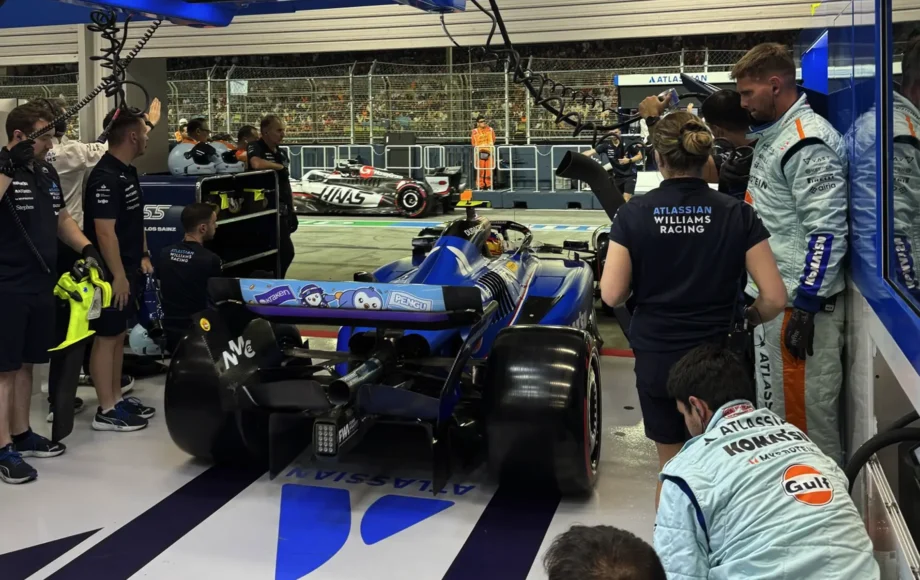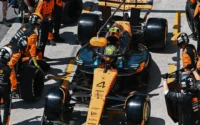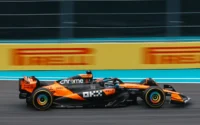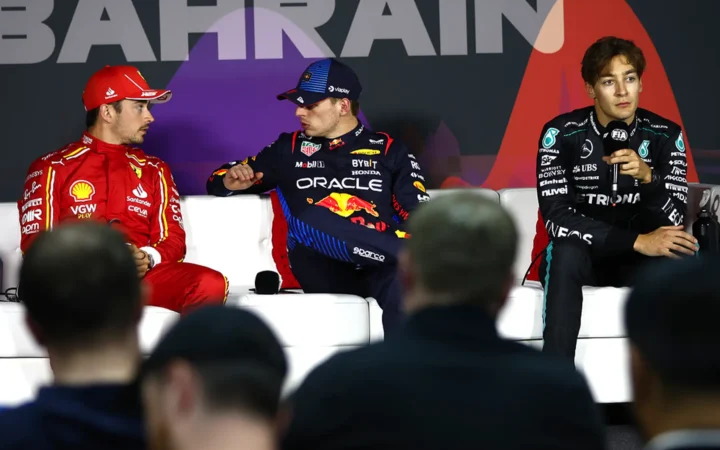Formula 1’s cost cap has become one of the defining features of the modern era, reshaping how teams approach the sport both on and off the track. Designed to control runaway spending and make competition closer, it has changed the landscape of F1 finance. Here’s how it came to be and what it really means for the teams.
What To Know?
- The F1 cost cap was introduced in 2021 to control spending and promote fairer competition.
- In 2025, teams can spend up to $135m per year, plus an allowance for extra races. This rises to $215m in 2026.
- Driver salaries and top staff wages sit outside the cap.
- Breaches can lead to fines, point deductions, or limits on wind tunnel testing.
The latest on the cost cap
The Formula 1 cost cap was back in the headlines in 2025 after the FIA published its findings for the 2024 season.
All ten teams and their engine partners were found to be within the spending limits, although Aston Martin picked up a “procedural breach” for an administrative delay.
It’s not the first time the topic has caused a stir, though. A few years earlier, one of the top teams (Red Bull Racing) was penalised for overspending, proving that the cost cap isn’t just a formality. So, what exactly is it and how does it work?
Formula One History Recommends
What is the F1 cost cap?
The F1 cost cap sets a maximum amount that teams can spend on developing and operating their race cars each year. It first came into effect in 2021, following years of debate over spiralling costs.
Originally planned at $175 million, the figure was trimmed to $145 million when the pandemic disrupted the 2020 season and placed pressure on finances across the grid. The cap then dropped by $5m annually through 2023, before stabilising at $135m for 2024 and 2025.
An additional $1.8m per race is added if the calendar exceeds 21 events, meaning the current 24-race season gives each team an extra $5.4m to play with. The total is also indexed to account for inflation, ensuring the rules keep pace with real-world economics.
Why does F1 have a cost cap?
Before the cap, Formula 1’s financial gulf between the biggest and smallest teams was vast. Giants like Mercedes and Ferrari operated with hundreds of millions more to spend than their midfield rivals, which often translated into on-track dominance.
The introduction of a spending limit was intended to make competition fairer and the sport more sustainable. It also made F1 teams more stable businesses. Many have moved from running at a loss to breaking even or turning a profit, and team valuations have soared.
McLaren’s partial stake sale in late 2025 valued the team at around $4.1 billion, a remarkable figure that reflects F1’s transformation from a money pit into a thriving franchise model.
What comes under the F1 cost cap?
Essentially, anything connected to designing, developing, and running the race car counts towards the cap. That includes:
- All car components, from the chassis to the smallest bolts
- Mechanics, engineers and other core racing staff
- Garage tools, spares and consumables
- Freight and logistics for transporting the cars around the world
The area that draws the most scrutiny is car development. Teams must decide carefully how much to spend on each upgrade and how often to produce new parts, since a single wrong decision can blow a hole in the budget.
What doesn’t come under the F1 cost cap?
Certain big costs sit outside the cap to ensure teams can still operate effectively and reward their key people. These include:
- Driver salaries
- Pay for the three highest-earning staff members
- Marketing, travel and hospitality costs
- Entry fees and FIA licences
- Property, legal and insurance expenses
- Road car or non-F1 projects
- Employee benefits, such as medical cover and bonuses
From 2026, the overall cap figure will rise to $215m, but the expansion means many of the currently exempt items will be brought inside the limit.
There is also a regional adjustment: from 2026, Sauber, which becomes the Audi works team, will receive a cost offset to reflect the higher living and salary expenses of operating from Switzerland.
Power unit manufacturers have been under their own cost cap since 2023 to rein in the huge spending associated with hybrid engine development.
What are the penalties for breaching the F1 cost cap?
Breaching the financial regulations can be serious, though the punishment depends on the scale of the offence.
If spending exceeds the limit by less than five per cent, it’s classed as a minor overspend. Anything above that is a major or “material” breach. Penalties range from fines and points deductions to limits on aerodynamic testing, or in extreme cases, exclusion from the championship.
Because each case can be complex, the FIA retains flexibility to judge breaches individually, rather than applying a one-size-fits-all approach.
What happens when an F1 team breaches the cost cap?
Every year, each team submits a detailed set of financial accounts to the FIA’s Cost Cap Administration (CCA). The CCA reviews them thoroughly before awarding compliance certificates.
If discrepancies are found, the CCA can negotiate a settlement known as an Accepted Breach Agreement for procedural or minor overspends. More serious cases are referred to the independent Cost Cap Adjudication Panel, a group of 12 judges elected by the FIA General Assembly.
The process can be lengthy, as teams and regulators pore over thousands of accounting details to ensure accuracy. That scrutiny has become a key part of the sport’s new financial discipline.
Which F1 teams have breached the cost cap?
So far, only one team has been found guilty of overspending since the regulations began. Red Bull exceeded the limit in 2021 and was fined $7m, along with a 10% reduction in wind tunnel and CFD testing for the following season.
In contrast, Aston Martin’s 2024 breach was purely procedural, relating to late paperwork, and was met with a minor administrative fee rather than a sporting penalty.
On the engine side, both Renault and Honda recorded procedural breaches in 2023, which were settled through Accepted Breach Agreements. By 2024, however, all five power unit manufacturers – Mercedes, Ferrari, Honda, Renault and Audi – were found to be fully compliant.
Seen in:









